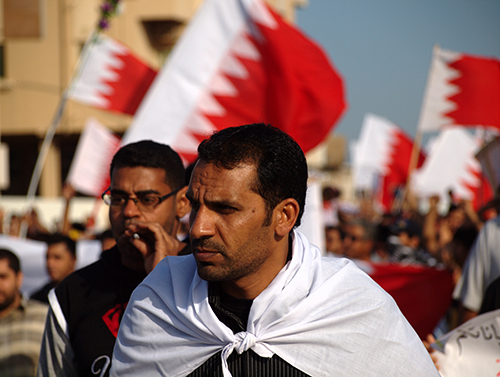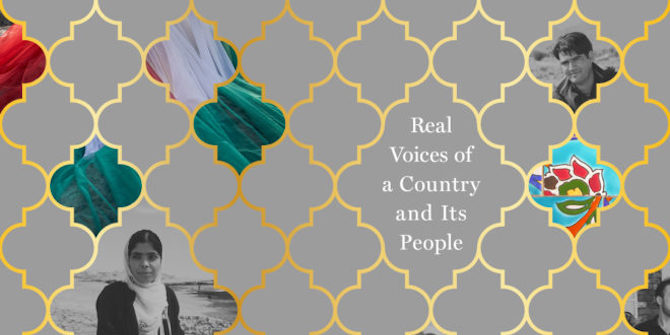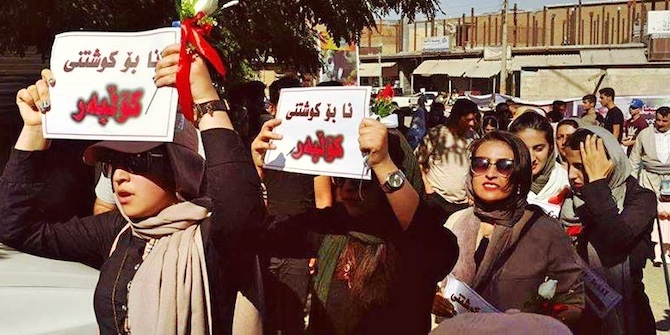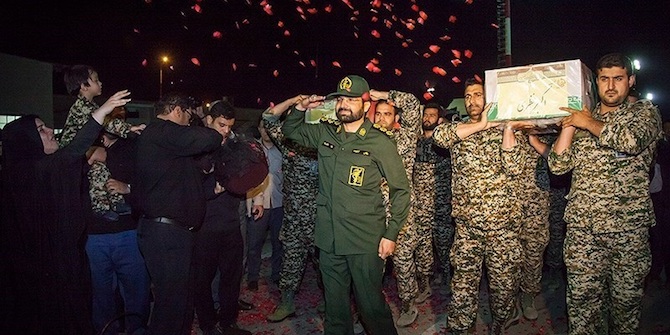by Simon Mabon
This memo was presented part of a workshop organised by the LSE Middle East Centre looking at the Saudi–Iran rivalry in the region on 7 May 2018.

On 4 November 2017, Lebanese Prime Minister Saad Hariri resigned from office whilst in Riyadh, Saudi Arabia. Hariri had been summoned to meet the Kingdom’s Crown Prince, Mohammad bin Salman who was increasingly concerned at the rising influence of Hezbollah – and with it, Iran – in Lebanon. Hours after the resignation, missiles launched by Houthi rebels were intercepted close to the King Khalid International airport in Riyadh. After resigning, Hariri was placed under house arrest and tensions in Lebanon increased. Fearing the worst, French President Emmanuel Macron flew to Riyadh and eschewing diplomatic protocol, Macron met bin Salman and urged him to release Hariri to prevent turmoil and the descent into civil war in Lebanon.
This event reveals a great deal about the contemporary Middle East and the extent to which the rivalry between Saudi Arabia and Iran shapes the region. After the Iranian revolution, the newly established Islamic Republic was keen to stress its pan-sectarian appeal, yet in an effort to retain a dominant position across the Islamic world, Saudi Arabia sought to frame events in sectarian terms, positioning Iran as a leading ‘Shi’a power’. In the aftermath of the revolution, competing pan-Islamic narratives transcended time, space and sovereign borders across the Middle East and beyond, finding traction as a consequence of contingent socio-economic, political and nationalist contexts. States across the region have historically been enmeshed in concurrent pressures of colonialism, nationalism and debate over the role of religion in society, blurring the distinction between internal and external, and leaving space for political manipulation. A direct consequence of this is the conflation of domestic and geopolitical agendas in an environment where loyalty may not necessarily be to the state.
Such an environment was famously described by Paul Noble as a ‘vast sound chamber in which information, ideas and opinions have resonated with little regard for state frontiers’. One such environment was framed by King Abdullah of Jordan as a ‘Shi’a Crescent’, a lazy piece of analysis framing Iranian influence as an arc stretching from Iran across the Gulf to Lebanon, bringing minority Shi’a groups together under the leadership of Tehran, revealing the evisceration of state frontiers as geopolitical agendas clash with domestic political contexts. Similar claims can be made with regard to Saudi support for and influence over Sunni groups across the Middle East.
Although such ideologies find traction across the region, we should not treat them as monolithic entities that ride roughshod over the region’s terrain. Instead, we must place them into context, aided by consideration of space. In For Space, Doreen Massey argues that the concept should be understood as the interaction of 3 premises: first, the idea that space is the product of myriad interactions and interrelations from the global to the ‘intimately tiny’. Second, that space must be a sphere of possibility, and third, that space is always under construction.
Such an understanding provides insight into how ideologies driven by Saudi Arabia and Iran find traction across the Middle East, yet this traction is contingent upon context specific factors. Within this rivalry, Bahrain and Lebanon provide contrasting examples of how the rivalry between Saudi Arabia and Iran shapes space, reflecting both different contexts and contingent factors from economics to socio-cultural histories.
Lebanon has long been central to Iranian foreign policy and geopolitical aspirations, dating back to 1982 and the facilitation of Hezbollah, the Party of God, whose use of Shi’a history – particularly the Battle of Karbala – creates a resistance narrative that is supported by the Iranian system of wilayat al faqih. This combination of Shi’a history and Iranian political support empowered Shi’a groups across Lebanon, increasing their power in the state, whilst positioning Hezbollah as a regional power. In doing so, Saudi Arabia’s attention turned to Lebanon as an area of increasing Iranian influence and capitalising on sectarian difference across the state by providing support for a range of different Salafi groups across the country.
Sectarian difference has been inherent within the fabric of the Lebanese state since the establishment of Greater Lebanon in 1921, continuing through the declaration of independence in 1943, before erupting in civil war in 1975. The Taif Accords that ended the civil war enshrined sectarian difference within the fabric of the Lebanese society, creating a power sharing agreement that gave each group a political voice. One immediate consequence of this, however, is that sectarian difference became incorporated within the fabric of the state and the development of political parties and blocs – March 8 and March 14 – following the Syrian withdrawal in 2005. These blocs also possessed international dimensions which provided space for external actors to penetrate the Lebanese political sphere, once again demonstrating the collapse of the internal–external distinction.
In Lebanon, the importance of context can be seen in the summer of 2006, when after 34 days of war between Israel and Hezbollah, the popularity of Hassan Nasrallah and Mahmoud Ahmadinejad across the Middle East far out stripped that of the conservative, reactionary Arab monarchs, transcending sectarian difference. In response to the popularity of Nasrallah and Hezbollah, Saudi Arabia donated $1.2 billion to rebuild Southern suburb of Beirut Dahiyeh, far outstripping the Iranian pledge of $120 million.
In the post Taif years, such difference began to manifest in myriad different forms, resulting in the entrenchment of sectarian identities in economic and communal contexts, through development of neopatrimonial and clientalist networks. Beyond political communalism, sectarian difference pervaded social, economic and community dimensions – which in turn reproduced political factionalism – furthered by the transformation of Beirut which was aided by the financial might of Riyadh and Tehran. Saudi investment resulted in the development of the area between Ras Beirut and Ain al Mraiseh, whilst Iranian investment was predominantly located in the Dahiyeh and the south of the country.
In the aftermath of the Arab Uprisings, new spaces of competition emerged as schisms between rulers and ruled erupted, providing opportunities for proxy competition between Riyadh and Tehran, albeit once again shaped by context specific contingent factors. The Uprisings provided scope for Tehran to increase its influence by capitalising on disenfranchised Shi’a minorities across the region, fuelling narratives of perfidious Iranian interference as a consequence.

The island of Bahrain is viewed by many as the ‘epicentre’ of sectarian and geopolitical competition, positioned between the two major regional powers, with political life shaped by a delicate sectarian balance. Given the absence of political reform after King Hamad came to power in 2002, it was hardly surprising that protests took place across Bahrain in early 2011. As the Saudi-led troops of the GCC Peninsula Shield Force crossed the King Fahd Causeway, itself designed and built to prevent Iranian expansionism after the revolution, fear of Iranian expansionism was very real as the schism between regime and society across Bahrain began to widen.
Although initially driven by democratic concerns, King Al Khalifa’s response to the uprisings framed them along sectarian lines, imbuing sectarian difference with political and security meaning. The securitisation of sectarian differences sought to ensure the survival of Al Khalifa rule by maintaining the support of Sunni communities in Bahrain, alongside the continued support of Saudi Arabia. The uprisings were quickly framed as the consequence of nefarious Iranian involvement in Bahrain’s sovereign affairs, evoking memories of the Islamic Front for the Liberation of Bahrain, and the UN plebiscite as a means of ensuring this support. This strategy homogenised Shi’a groups, eradicating political, theological, economic and tribal distinctions and framed the Shi’a as fifth columnists, doing the bidding of Iran.
Saudi-imposed red lines quickly limited scope for dialogue, resulting in the Crown Prince being withdrawn from the public sphere for a number of years after transgressing restrictions. Moreover, the sectarian master narrative provided the means through which events in Bahrain could be viewed as part of a broader geopolitical struggle, eroding legitimate democratic aspirations and political grievances. In spite of myriad claims to the contrary, the Bassiouni Independent Commission Inquiry found no evidence of Iranian involvement in the Uprisings. In the years that followed, Al Khalifa’s efforts to securitise Shi’a groups – and by extension Iran – gained traction, supported by Saudi Arabia, but aimed at Sunni communities across the island and Middle East, along with the US and UK.
The struggle for supremacy between Saudi Arabia and Iran plays out across a range of different geographies, in myriad spaces and forms. Whilst geopolitical considerations shape the nature of the rivalry we should not ignore local agency. The manifestation of the rivalry in such spaces are determined by local context and contingent factors, emerging in particular forms as a consequence of political, communal and socio-economic factors. Time is also an important factor in shaping the struggle. In Bahrain, latent structural factors were rapidly mobilised in response to the Arab Uprisings, whilst in Lebanon, the rivalry is embedded within the fabric of the state as a consequence of the post Taif political landscape, emerging at a slower pace in times of crisis.
 Dr Simon Mabon is Senior Lecturer in International Relations at Lancaster University where he is also Director of the Richardson Institute. Mabon is the author of Saudi Arabia and Iran: Power and Rivalry in the Middle East (London: I.B. Tauris, 2015) amongst many other books and articles. He regularly contributes to international media outlets and tweets @drmabon
Dr Simon Mabon is Senior Lecturer in International Relations at Lancaster University where he is also Director of the Richardson Institute. Mabon is the author of Saudi Arabia and Iran: Power and Rivalry in the Middle East (London: I.B. Tauris, 2015) amongst many other books and articles. He regularly contributes to international media outlets and tweets @drmabon
Other posts in this Series:
- The Iranian Threat: The Saudi Perspective by Ali Shihabi
- Saudi Domestic Uncertainties and the Rivalry with Iran by Madawi Al-Rasheed
- Saudi Arabia and Iran: Mirrored Islamisms by John Jenkins
- Yemen: Background to the Manufacture of a Proxy War by Helen Lackner
- Saudi–Iranian Rivalry and the Impact on the Syrian Conflict by Julien Barnes-Dacey
- Weathering the Storm: Europe’s Iran Policy after America’s Withdrawal from the Nuclear Deal by Riccardo Alcaro
- Balancing Act: Russia between Iran and Saudi Arabia by Mark N. Katz
- Conceptual Origins of Iranian-Saudi Entanglements by Mahmood Sariolghalam







3 Comments